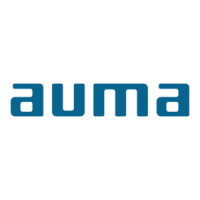3. Transport and storage
.
Transport to place of installation in sturdy packing.
.
Do not attach ropes or hooks to the handwheel for the purpose of lifting by
hoist.
.
Store in well-ventilated, dry room.
.
Protect against floor dampness by storage on a shelf or on a wooden
pallet.
.
Cover to protect against dust and dirt.
.
Apply suitable corrosion protection agent to bright surfaces.
4. General information about Modbus
For the exchange of information among automation systems and between
automation systems and the connected decentral field devices, serial
fieldbuses are mainly used today as the communication system. Thousands
of applications have proved impressively that cost savings of up to 40 % in
wiring, commissioning, and maintenance are achieved by using fieldbus
technology. Just two wires are needed to transmit all relevant information for
the field devices, such as input and output signals, parameters, and diag-
nostics data. While in the past the fieldbuses used were often manufacturer
specific and incompatible with other bus systems, the systems employed
today are almost exclusively open and standardized. This means that the
user is independent of individual suppliers and can choose the best product
at the most competitive price.
Modbus is an open international fieldbus system which is also used
successfully throughout the world. The application range includes automa-
tion in the areas of manufacturing, processing, and building.
These operation instructions cannot provide a general introduction into
Modbus. For this, please refer to the literature references in appendix C
(page 57).
4.1 Basic characteristics Modbus defines the functional features of a serial fieldbus system with
which distributed digital automation devices can be interconnected. Modbus
distinguishes between master and slave devices.
Master devices control the data traffic on the Bus. A master is allowed to
send messages without an external request.
Slave devices such as AUMA Modbus actuators are peripheral devices.
Typical slave devices are input/ output devices, valves, actuators, and
measuring transmitters. They do not have bus access, i.e. they may only ,at
the request of a master, transmit messages to that master.
5
Actuator controls AUMA MATIC AM/ AMExB/ AMExC
Operation instructions Modbus

